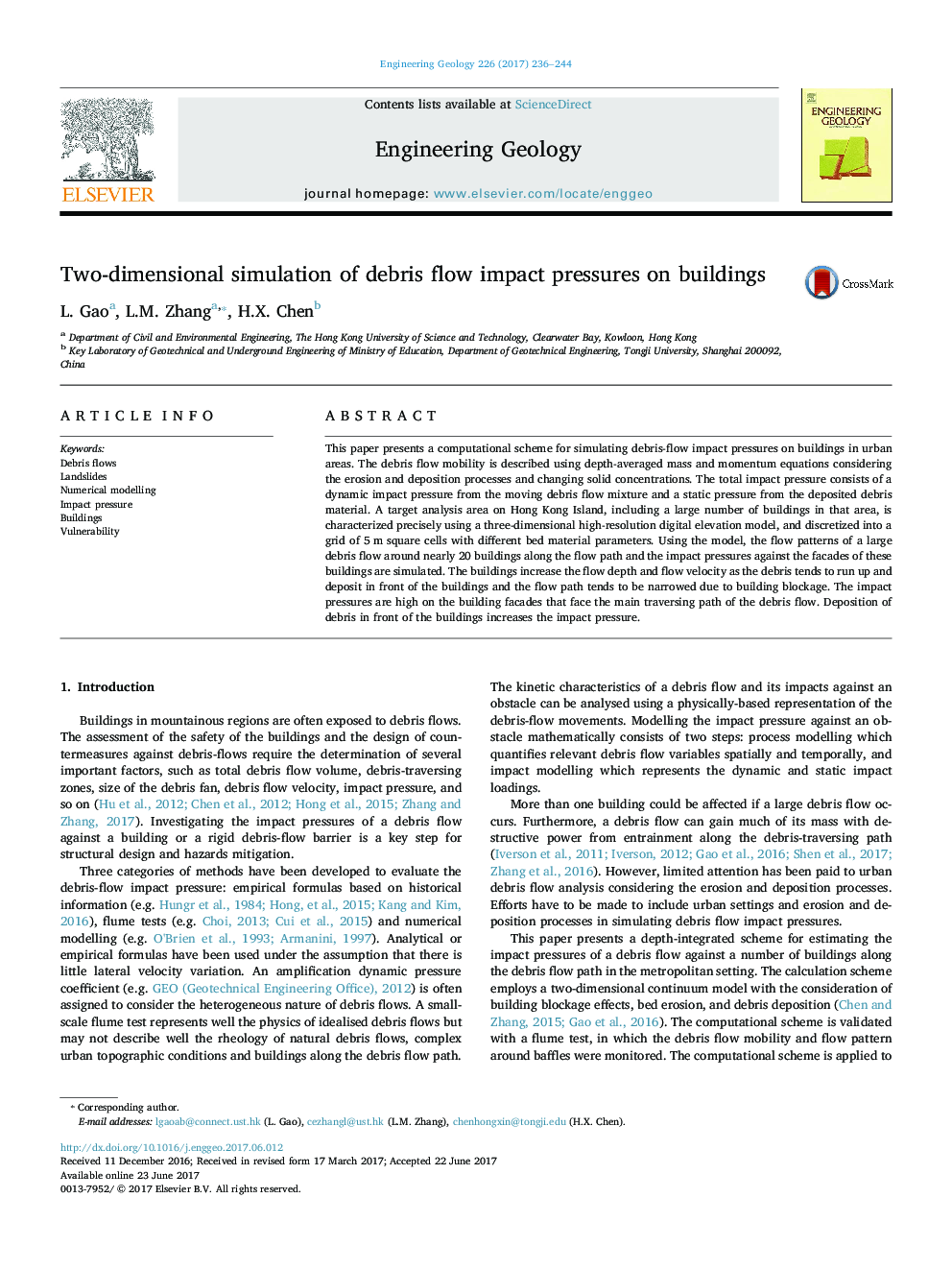| کد مقاله | کد نشریه | سال انتشار | مقاله انگلیسی | نسخه تمام متن |
|---|---|---|---|---|
| 5787487 | 1641759 | 2017 | 9 صفحه PDF | دانلود رایگان |
- A scheme is developed to simulate debris-flow impact pressures on buildings.
- The terrain and buildings are described by a high-resolution digital elevation model.
- The debris flow patterns and impact pressures on buildings are simulated.
- The buildings increase the flow depth and velocity as the debris tends to run up.
- Deposition of debris in front of the buildings increases the impact pressure.
This paper presents a computational scheme for simulating debris-flow impact pressures on buildings in urban areas. The debris flow mobility is described using depth-averaged mass and momentum equations considering the erosion and deposition processes and changing solid concentrations. The total impact pressure consists of a dynamic impact pressure from the moving debris flow mixture and a static pressure from the deposited debris material. A target analysis area on Hong Kong Island, including a large number of buildings in that area, is characterized precisely using a three-dimensional high-resolution digital elevation model, and discretized into a grid of 5Â m square cells with different bed material parameters. Using the model, the flow patterns of a large debris flow around nearly 20 buildings along the flow path and the impact pressures against the facades of these buildings are simulated. The buildings increase the flow depth and flow velocity as the debris tends to run up and deposit in front of the buildings and the flow path tends to be narrowed due to building blockage. The impact pressures are high on the building facades that face the main traversing path of the debris flow. Deposition of debris in front of the buildings increases the impact pressure.
Journal: Engineering Geology - Volume 226, 30 August 2017, Pages 236-244
